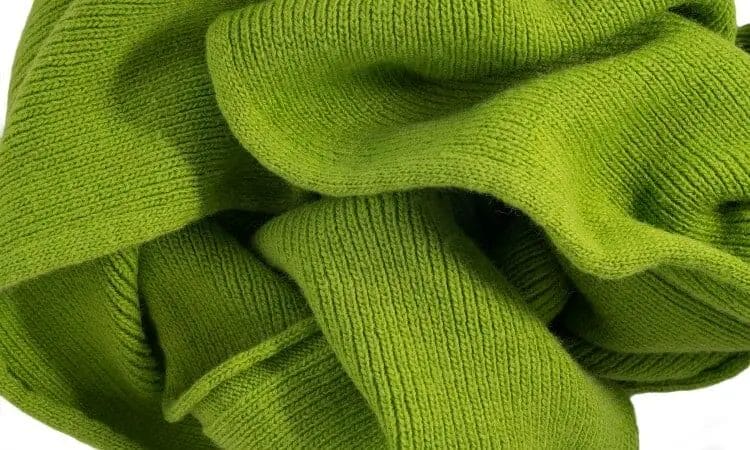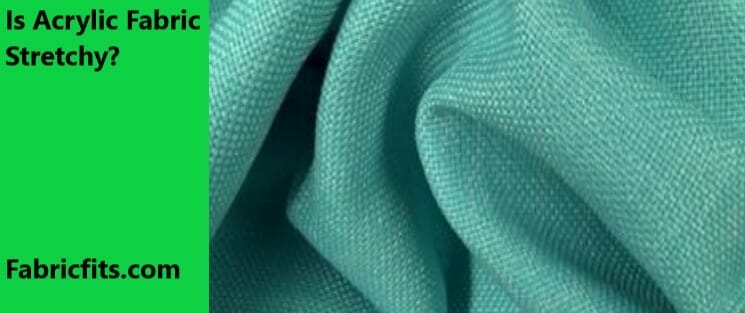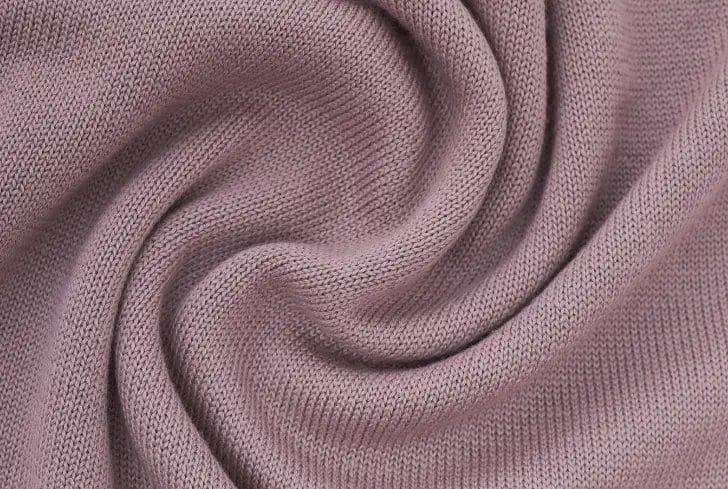Acrylic fabric is known for its durability and resilience, but when it comes to stretchiness, it falls short compared to other synthetic and natural fibers. While it may have a slight stretch, acrylic fabric is generally considered to be less stretchy than materials like spandex or elastane. However, this can vary depending on the specific blend and construction of the fabric. So, while acrylic fabric may have some stretch, it is not typically known for its elasticity.

2. Exploring the Elasticity of Acrylic Fabric: Essential Facts
Acrylic fabric is a popular synthetic textile known for its versatility and durability. It is widely used in clothing, upholstery, and various other applications. One important characteristic of acrylic fabric that sets it apart from natural fibers is its elasticity. In this section, we will explore the elasticity of acrylic fabric, its properties, and why it is a preferred choice in many industries.
2.1 What is Elasticity?
Elasticity refers to the ability of a material to stretch and return to its original shape when the applied force is removed. It is an important property in fabrics as it allows them to conform to the body and provide a comfortable fit. Acrylic fabric is known for its excellent elasticity, which makes it suitable for a wide range of applications.
2.2 Factors Affecting Elasticity
Several factors contribute to the elasticity of acrylic fabric:
- Fiber Structure: The molecular structure of acrylic fibers allows them to stretch and recover their original shape efficiently.
- Yarn Construction: The way acrylic yarn is spun and plied can affect its elasticity. Tightly plied yarns tend to be less elastic compared to loosely plied ones.
- Blending: Acrylic fibers can be blended with other materials, such as elastane or spandex, to enhance their elasticity.
- Weave or Knit: The fabric’s construction, whether it is woven or knitted, can impact its elasticity. Knitted acrylic fabrics generally have higher elasticity compared to woven ones.
2.3 Benefits of Elasticity in Acrylic Fabric
The elasticity of acrylic fabric offers several benefits that make it a preferred choice in various industries:
- Comfortable Fit: Acrylic fabric’s elasticity allows it to stretch and conform to the body, providing a comfortable and snug fit.
- Freedom of Movement: The stretchiness of acrylic fabric enables unrestricted movement, making it ideal for activewear, sportswear, and dancewear.
- Resilience: Acrylic fabric’s excellent recovery properties ensure that it retains its shape even after repeated stretching.
- Crease Resistance: The elasticity of acrylic fabric helps minimize creases and wrinkles, making it a low-maintenance textile.
- Durability: Acrylic fabric’s elasticity contributes to its durability, as it can withstand stretching and frequent wear without losing its shape.
2.4 Care and Maintenance of Elastic Acrylic Fabric
To maintain the elasticity and longevity of acrylic fabric, it is essential to follow proper care instructions:
- Washing: Acrylic fabric is machine washable, but it is recommended to use a gentle cycle with cold water to minimize stretching.
- Drying: Air drying is preferable for acrylic fabric to prevent stretching or shrinkage. If using a dryer, select a low-heat setting.
- Ironing: Acrylic fabric is prone to melting under high heat, so it is best to avoid ironing. If necessary, use a low-heat setting or place a cloth between the fabric and the iron.
- Storage: Store acrylic garments flat or folded to maintain their shape and elasticity.
In summary, acrylic fabric’s elasticity is a desirable attribute that offers comfort, flexibility, and durability. Its ability to stretch and recover makes it an excellent choice for various applications, ranging from clothing to upholstery. By understanding the essential facts about the elasticity of acrylic fabric, you can make informed decisions when selecting and caring for garments or products made from this versatile textile.

How Stretchy is Acrylic Fabric? Unveiling the Truth
Acrylic fabric is a popular choice for clothing and textiles due to its versatility, durability, and affordability. One question that often arises when considering acrylic fabric is its stretchiness. In this section, we will delve into the truth behind the stretchiness of acrylic fabric and explore its unique properties.
Acrylic fabric is known for its excellent elasticity, making it inherently stretchy. The fabric has a natural ability to stretch and recover to its original shape, providing a comfortable and flexible fit for various applications. This elasticity is attributed to the chemical structure of the acrylic polymer used in the fabric’s production.
Unlike natural fibers such as cotton or wool, acrylic fabric is a synthetic material. It is made from a polymer called polyacrylonitrile, which is derived from petroleum or coal. During the manufacturing process, the polymer is spun into fibers and then woven or knitted into fabric.
One of the key advantages of acrylic fabric is its ability to retain its shape and elasticity even after repeated stretching and washing. This makes it an ideal choice for garments that require stretch and recovery, such as activewear, swimwear, and sportswear.
Acrylic fabric also offers a good balance between stretchiness and strength. It is resilient and can withstand stretching without losing its shape or integrity. This makes it suitable for garments that need to maintain their form, such as sweaters, cardigans, and socks.
However, it is important to note that the stretchiness of acrylic fabric can vary depending on several factors, including the specific blend of fibers, the knitting or weaving technique used, and the thickness of the fabric. Acrylic fabric can be blended with other fibers like cotton, polyester, or spandex to enhance its stretchiness and improve its overall performance.
In summary, acrylic fabric is known for its stretchiness and ability to retain its shape. It offers excellent elasticity and durability, making it a popular choice for a wide range of applications. Whether you’re looking for comfortable activewear or cozy winter garments, acrylic fabric can provide the stretch and recovery you desire.

Understanding the Flexibility of Acrylic Fabric: Key Considerations
When it comes to choosing the right fabric for your project, there are several factors to consider. One important aspect to evaluate is the flexibility of the fabric. Acrylic fabric is known for its versatility and ability to stretch, making it a popular choice in various applications. In this section, we will explore the key considerations when it comes to understanding the flexibility of acrylic fabric.
Elasticity and Stretch
Acrylic fabric is known for its excellent elasticity and stretch. This means that it has the ability to stretch and return to its original shape without losing its integrity. This flexibility makes acrylic fabric a great choice for garments and accessories that require ease of movement. Whether you are designing activewear, swimwear, or dance costumes, acrylic fabric will provide the necessary stretch to ensure a comfortable fit.
It is important to note that the level of stretch and elasticity can vary depending on the specific type of acrylic fabric. Some acrylic blends may offer more stretch than others, so it is crucial to consider the specific requirements of your project when selecting the fabric.
Drapability
Another key consideration when it comes to acrylic fabric is its drapability. Drapability refers to how well the fabric hangs and falls when used in garments or home decor items. Acrylic fabric offers a good balance between structure and fluidity, making it suitable for a wide range of applications.
For clothing items, such as dresses or skirts, acrylic fabric provides a beautiful drape that enhances the overall silhouette. The fabric flows smoothly over the body, creating an elegant and flattering look. Additionally, acrylic fabric is often used in home decor, such as curtains or upholstery, as it can be draped easily to achieve the desired aesthetic.
Resistance to Wrinkles
One of the benefits of acrylic fabric is its resistance to wrinkles. Unlike natural fibers, such as cotton or linen, acrylic fabric is less prone to wrinkling. This makes it an excellent choice for travel garments or items that require minimal maintenance.
Acrylic fabric’s resistance to wrinkles also makes it a practical option for upholstery and home decor applications. Furniture upholstered with acrylic fabric will maintain its crisp appearance, even with frequent use.
Care and Maintenance
When working with acrylic fabric, it is important to follow the care instructions to ensure its longevity and maintenance of its flexibility. Generally, acrylic fabric can be machine-washed in cold water and tumble-dried on a low setting. However, it is always recommended to check the care label for specific instructions.
It is also advisable to avoid using high heat or harsh chemicals, as they can negatively impact the fabric’s flexibility and overall quality over time.
In summary, acrylic fabric offers excellent flexibility due to its elasticity, stretch, and drapability. It is a versatile fabric that can be used in a variety of applications, from clothing to home decor. Its resistance to wrinkles and ease of care make it a practical choice for many projects. By considering these key factors, you can confidently choose acrylic fabric for your next endeavor.
The Stretch Factor: Demystifying the Stretchiness of Acrylic Fabric
Acrylic fabric is a popular choice in the fashion industry due to its lightweight, soft texture and ability to retain vibrant colors. One of the key factors that influences the performance and comfort of acrylic fabric is its stretchiness. Understanding the stretch factor of acrylic fabric is essential for both designers and consumers to make informed decisions when it comes to choosing the right fabric for their needs.
What is Stretchiness?
Stretchiness, also known as elasticity, refers to the ability of a fabric to stretch and return to its original shape without losing its integrity. It determines how comfortable and flexible a garment made from the fabric will be. Acrylic fabric can have varying degrees of stretchiness, depending on its composition and construction.
Factors Affecting Stretchiness
The stretchiness of acrylic fabric is influenced by several factors:
- Fiber Composition: The type and blend of fibers used in the fabric play a significant role in its stretchiness. Acrylic fabric is often blended with other fibers such as polyester, spandex, or nylon to enhance its stretchability.
- Weave or Knit: The way the fabric is woven or knitted can affect its stretchiness. Fabrics with a tighter weave or knit tend to have less stretch, while those with a looser construction offer more stretch.
- Fabric Thickness: Thicker acrylic fabrics generally have less stretch compared to thinner ones. The thickness affects the fabric’s ability to expand and contract.
Benefits of Stretchy Acrylic Fabric
Choosing a stretchy acrylic fabric can offer several benefits:
- Comfort: Acrylic fabrics with stretch properties provide ease of movement, making them ideal for sportswear, activewear, and garments that require mobility.
- Fit: The stretch factor allows the fabric to conform to the body, ensuring a better fit and enhancing the overall comfort of the garment.
- Durability: Stretchy acrylic fabrics tend to be more resistant to tearing and creasing, making them a durable choice for various applications.
- Easy Care: Acrylic fabrics are known for their low maintenance and easy care. Stretchy acrylic blends often retain their shape and elasticity even after multiple washes.
Applications of Stretchy Acrylic Fabric
The stretch factor of acrylic fabric makes it suitable for a wide range of applications:
- Fashion Apparel: Stretchy acrylic fabric is commonly used in the production of leggings, tights, sweaters, and other garments that require comfort and flexibility.
- Active and Sportswear: The stretchiness of acrylic fabric makes it ideal for activewear, such as yoga pants, athletic tops, and performance wear.
- Crafts and Accessories: Acrylic fabric with stretch properties is also popular in crafting projects, including headbands, scrunchies, and accessories that require elasticity.
In summary, the stretch factor plays a crucial role in determining the performance and comfort of acrylic fabric. Factors such as fiber composition, weave or knit, and fabric thickness influence the stretchiness of the fabric. Stretchy acrylic fabrics offer benefits like comfort, better fit, durability, and easy care. They find applications in fashion apparel, active and sportswear, as well as crafts and accessories. By understanding the stretchiness of acrylic fabric, designers and consumers can make informed choices when selecting materials for their projects.
FAQs
Is acrylic fabric stretchy?
No, acrylic fabric is typically not very stretchy. It is a synthetic fiber that is known for its stiffness and lack of elasticity. It is often used as a substitute for wool in clothing and accessories.
Conclusion
After analyzing the properties of acrylic fabric, it is clear that it is not as stretchy as other materials like spandex or elastane. Although acrylic fibers have some flexibility, they lack the elasticity needed for significant stretch. This is because acrylic fabrics are typically made from synthetic polymers that offer strength and durability rather than stretchiness. However, it is important to note that the stretchiness of acrylic fabric can vary depending on the specific blend and construction of the fabric.
In conclusion, if you are looking for a highly stretchy fabric, acrylic may not be your best choice. But if you prioritize qualities like warmth, softness, and resistance to wrinkles, acrylic fabric can still be a great option for your clothing or upholstery needs.
